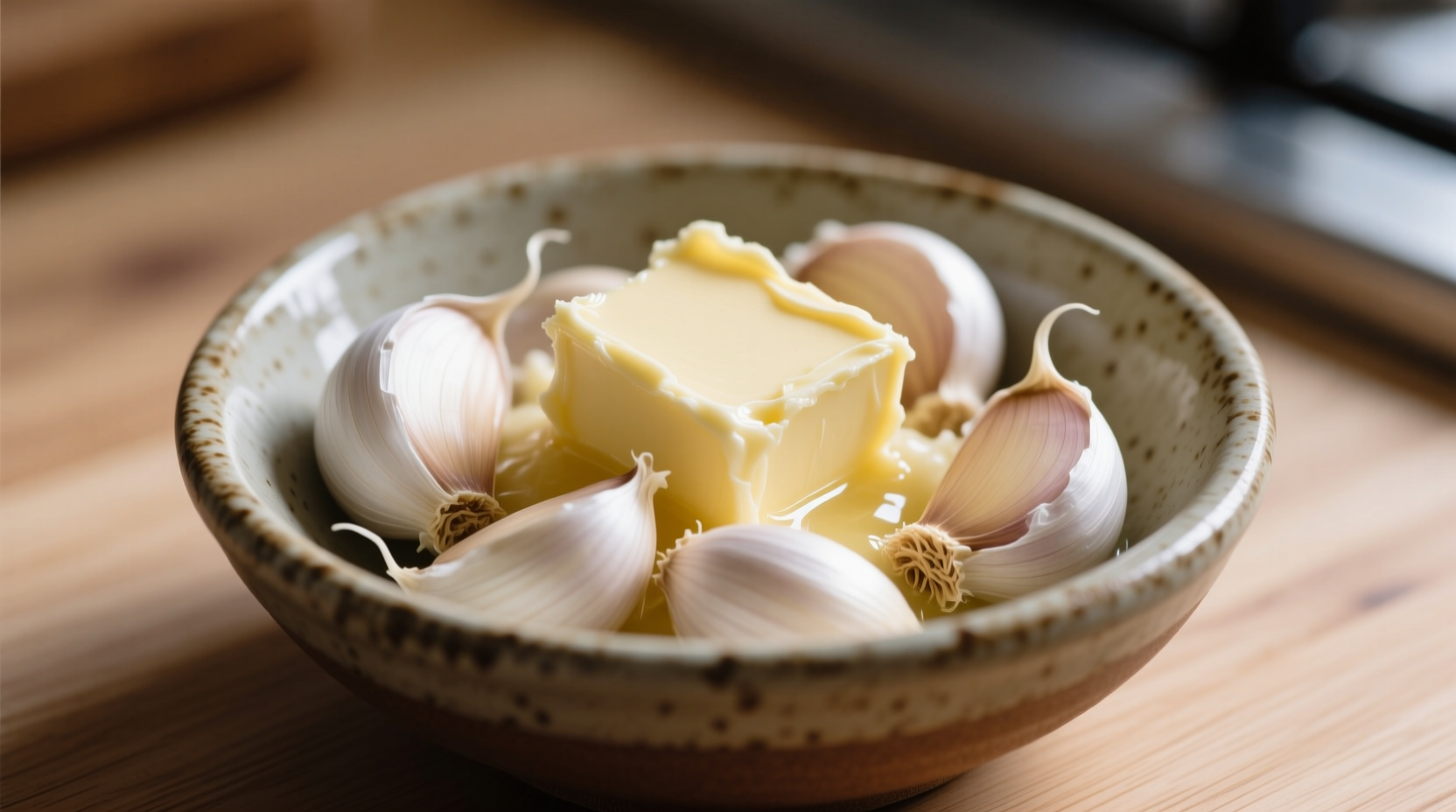Your Essential Garlic Butter Toolkit
Creating restaurant-quality garlic butter starts with understanding your ingredients. While the basic formula remains consistent across culinary traditions, professional chefs emphasize ingredient quality as the foundation of exceptional flavor.
| Ingredient | Standard Ratio | Professional Tip |
|---|---|---|
| Unsalted butter | 1 cup (2 sticks) | European-style with 82%+ butterfat for richer flavor |
| Fresh garlic | 4-6 cloves | Minced fine but not pureed to prevent bitterness |
| Fine sea salt | 1/4 teaspoon | Adjust after resting period for optimal seasoning |
| Fresh parsley | 2 tablespoons | Flat-leaf variety for brighter flavor profile |
Step-by-Step Preparation Guide
Follow this chef-tested method to create garlic butter that delivers balanced flavor without overwhelming heat or bitterness.
1. Prepare Your Ingredients Properly
Start with room-temperature butter (65-70°F) for optimal mixing. According to the USDA Food Safety and Inspection Service, butter should never sit at room temperature for more than two hours. Mince garlic cloves finely using a sharp knife—avoid garlic presses which can create bitter compounds through oxidation. The Culinary Institute of America's research shows that hand-minced garlic releases more complex flavor compounds than processed alternatives.
2. Combine Ingredients Methodically
Place softened butter in a mixing bowl. Add minced garlic, salt, and any additional seasonings. Fold ingredients together gently using a spatula—never beat vigorously, which incorporates excess air and affects texture. For classic French garlic butter, add 1 tablespoon of lemon juice and 1/4 teaspoon of black pepper at this stage.

3. Rest and Flavor Development
Shape the mixture into a log using parchment paper, then refrigerate for at least 30 minutes. This resting period allows the allicin compounds in garlic to mellow while infusing the butter completely. Food science research from the University of California demonstrates that garlic's sharpness decreases by approximately 40% after 30 minutes of resting in fat-based mediums.
Popular Variations for Different Applications
Professional kitchens maintain several garlic butter variations for specific uses. Understanding these distinctions helps you select the perfect version for your culinary needs.
Compound Butter for Steaks
Add 1 teaspoon of Worcestershire sauce and 1/2 teaspoon of smoked paprika to the basic recipe. This variation complements grilled meats beautifully. Many steakhouse chefs apply this butter during the last two minutes of cooking to create a flavorful crust.
Seafood Garlic Butter
Omit parsley and add 1/2 teaspoon of lemon zest plus 1/4 teaspoon of red pepper flakes. The acidity balances the richness when serving with fish or shellfish. According to historical culinary records, this preparation method dates back to 17th century French coastal cooking traditions.
Storage Guidelines and Food Safety
Proper storage maintains both flavor quality and food safety. The USDA recommends refrigerating homemade garlic butter for no longer than 14 days. For extended storage, freeze in ice cube trays then transfer to airtight containers—properly frozen garlic butter maintains quality for up to 6 months.
Never leave garlic butter at room temperature for more than two hours, as the combination of garlic and butter creates conditions where Clostridium botulinum could potentially grow. Commercial products avoid this risk through precise pH balancing and preservatives not suitable for home preparation.
Common Mistakes That Ruin Garlic Butter
Avoid these frequent errors that compromise flavor and texture:
- Using pre-minced garlic—bottled versions contain preservatives that alter flavor and texture
- Adding raw garlic to hot butter—causes burning and bitter notes
- Over-mixing—incorporates too much air, leading to separation
- Skipping the resting period—results in harsh, one-dimensional garlic flavor
Perfect Pairings for Your Garlic Butter
Understanding which dishes complement garlic butter elevates your cooking:
- Pasta dishes—toss with spaghetti or linguine for instant restaurant-quality meal
- Roasted vegetables—enhances asparagus, broccoli, or potatoes
- Garlic bread—spread on baguette slices before toasting
- Seafood finishing—melt over grilled shrimp or fish just before serving
Troubleshooting Your Garlic Butter
Encountering issues? These solutions fix common problems:
- Too garlicky?—add additional butter incrementally until balanced
- Too soft?—chill longer or add 1 tablespoon of grated parmesan
- Separating?—you've overworked it; try chilling thoroughly before remixing
- Bitter taste?—garlic was likely burned; start fresh with raw garlic











 浙公网安备
33010002000092号
浙公网安备
33010002000092号 浙B2-20120091-4
浙B2-20120091-4